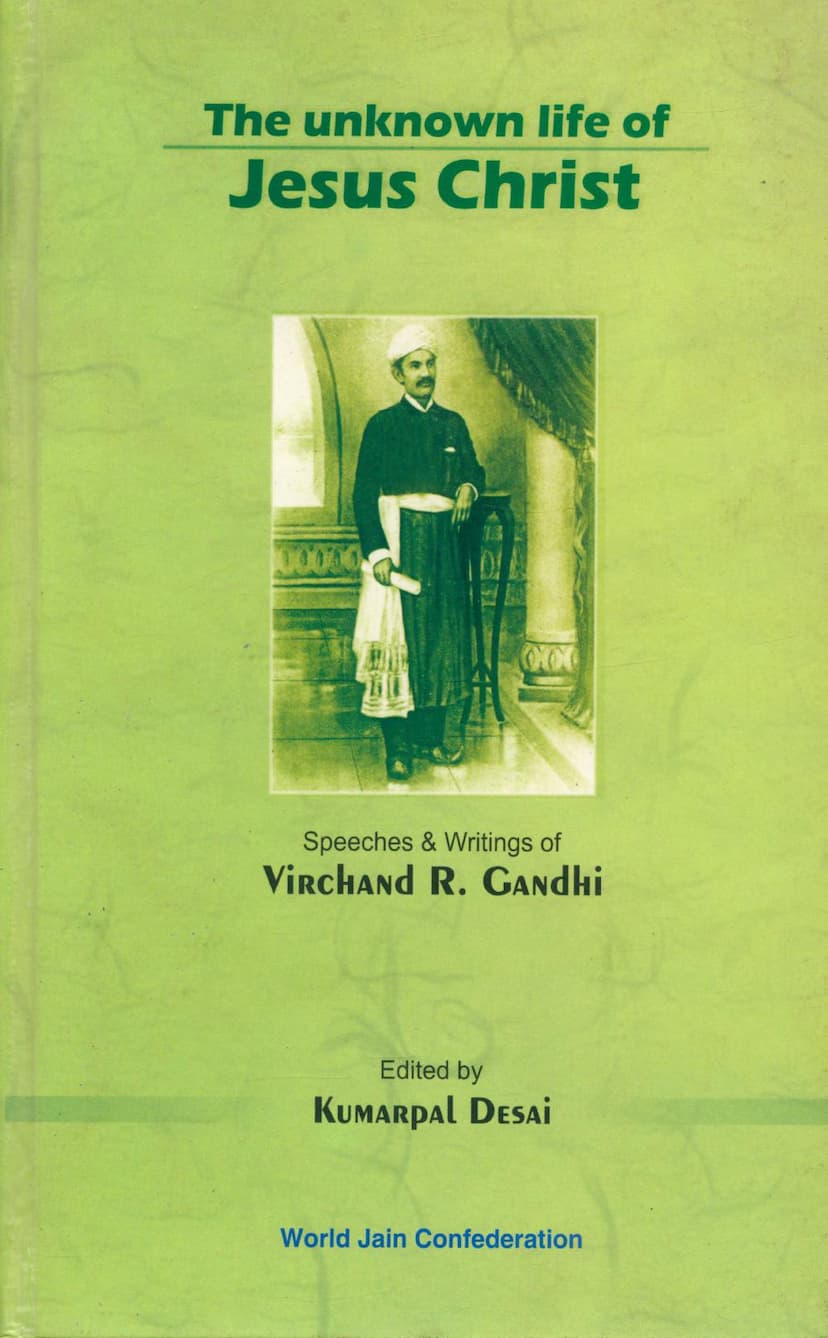Unknown Life Of Jesus Christ New Edition 2009 Publication
Added to library: September 2, 2025

Summary
This document is an English translation and edition of "The Unknown Life of Jesus Christ," originally written in French by Nicholas Notovitch and translated into English with an introduction and illustrations by Virchand R. Gandhi. The second edition was published in 2009 by the World Jain Confederation.
The book claims to be based on ancient manuscripts discovered in a Buddhist monastery in Tibet by Nicholas Notovitch. These manuscripts allegedly detail a period of Jesus Christ's life, referred to as "Saint Issa," that is not covered in the canonical Gospels.
Key aspects and content presented in the document:
- Origin and Authorship: The book is presented as a translation by Virchand R. Gandhi of Nicholas Notovitch's French work. Kumarpal Desai is credited as the editor for this edition, and Prof. G. L. Christie revised it. The World Jain Confederation is the publisher.
- Nicholas Notovitch's Account: Notovitch, a Russian officer, journalist, and aristocrat, claimed to have discovered ancient Buddhist manuscripts in the Himis Monastery in Ladakh (then part of Tibet). He stated that he broke his leg and was convalescing at the monastery, where the chief Lama read to him from these manuscripts about the "Life of Saint Issa."
- The "Life of Saint Issa": The manuscripts describe Issa (Jesus) leaving Jerusalem at age thirteen and traveling to India with a merchant caravan. He spent time studying with Jains, then Brahmins in various holy cities like Jagannath Puri and Benares, and subsequently with Buddhists for six years, learning Pali. The text details his preaching against idolatry, caste, and the corrupt practices of priests, emphasizing high morality and the worship of one God.
- Jesus's Indian Journey: The narrative suggests Jesus spent seventeen years in India and Tibet, from age thirteen to twenty-nine, serving as both a student and teacher of religious and philosophical traditions. He is portrayed as having attained spiritual realization in the Himalayas and later formally adopted monastic life.
- Jain and Buddhist Similarities: Virchand Gandhi highlights the parallels between Jesus's teachings as presented in the "Life of Saint Issa" and the principles of Hinduism, Jainism, and Buddhism. He points out similarities in ethics, non-violence, vegetarianism, and opposition to idol worship.
- Controversy and Skepticism: The document acknowledges that Notovitch's claims were met with skepticism and accusations of fraud. Scholars like Max Müller and J. Archibald Douglas failed to find evidence supporting Notovitch's visit or the existence of the manuscripts. The head of the Himis community reportedly signed a document denouncing Notovitch.
- Defense and Support for the Claims: Despite the controversy, the book presents evidence from other travelers and scholars (like Swami Abhedananda, Nicholas Roerich, Henrietta Merrick, Elizabeth Caspari, and Robert Ravicz) who visited Himis Monastery and reported seeing or hearing about similar documents related to Jesus's life in the East.
- Virchand R. Gandhi's Contribution: The publication emphasizes Virchand R. Gandhi's role as a representative of Jainism at the Parliament of Religions in Chicago in 1893, where he gained recognition for his scholarship and eloquent defense of Indian philosophies. His translation of Notovitch's work is presented as a testament to his research acumen, linguistic skills, and dedication to understanding and sharing knowledge across cultures. The text also includes a profile of Gandhi, detailing his life, works, and advocacy for Jainism and Indian culture.
- Historical Context and Trade Routes: The "Translator's Introduction" extensively discusses ancient Indian trade routes and commercial connections with the West, using biblical references to highlight India's ancient prominence and the circulation of its goods and ideas, suggesting that such connections made Jesus's journey to India plausible.
- Critique of Western Perceptions: Gandhi, through his introduction and footnotes, attempts to correct what he perceives as misrepresentations of Indian culture and religions by Western scholars and missionaries. He also critiques the caste system while acknowledging its historical context.
- "Life of Saint Issa" Narrative Details: The "Life of Saint Issa" section provides a narrative of Jesus's life from his birth, including his departure from Jerusalem, his studies in India, his teachings, his conflict with Brahmins, his preaching to lower castes, his journey through Persia, and his return to Israel. It describes his arrest, trial, crucifixion, and the events following his death, offering a different account of Pontius Pilate's role and the responsibility for his death compared to the canonical Gospels.
- Summary and Comparison: The final chapter, "Summary," directly addresses the similarities and differences between the "Life of Issa" and the biblical accounts, attributing these variations to the historical context of writing and the oral transmission of stories. It also discusses the historicity of Moses and offers a Buddhist interpretation of divine incarnations.
In essence, the book "The Unknown Life of Jesus Christ," as presented through this edition, is a compilation that explores the controversial theory of Jesus's lost years in India and Central Asia, based on Notovitch's account and translated and contextualized by Virchand R. Gandhi, a prominent Jain scholar. It aims to present an alternative perspective on Jesus's life, highlighting its potential connections with Eastern religions and philosophies, while also showcasing Gandhi's intellectual contributions.